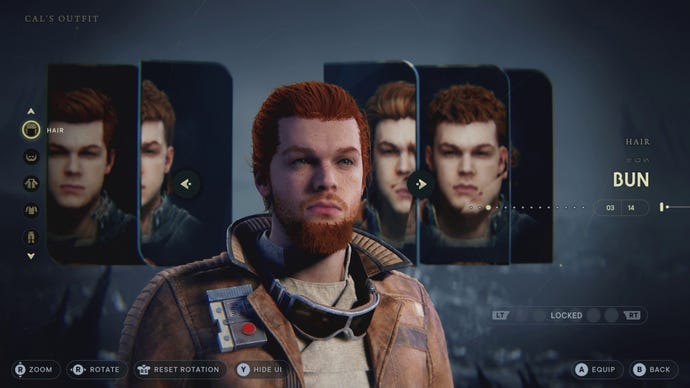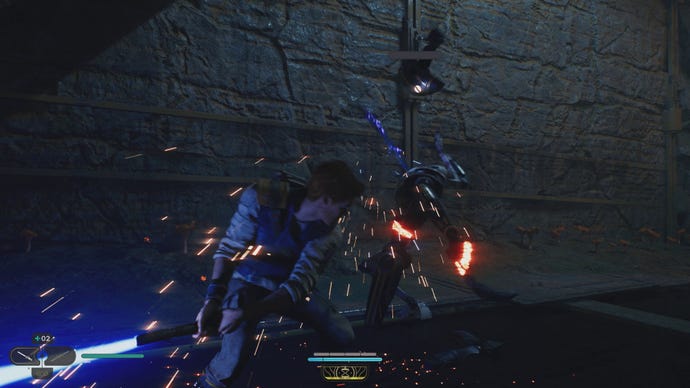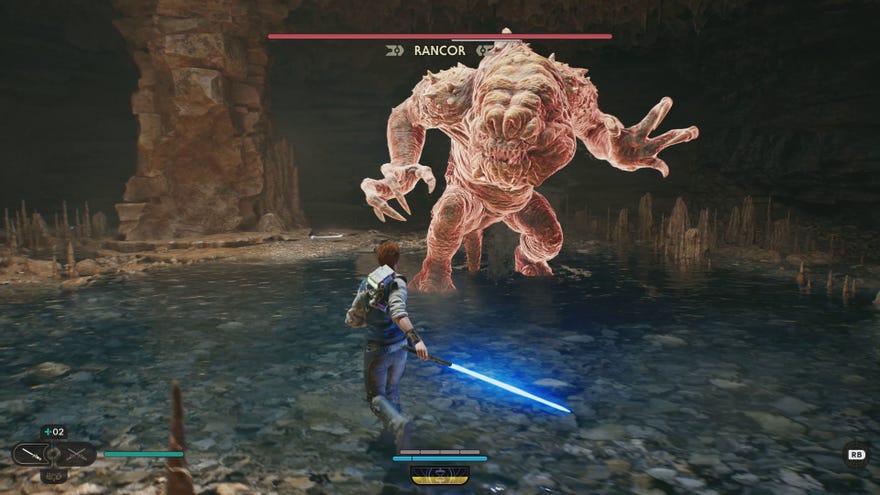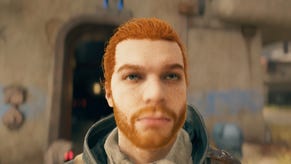Why Star Wars Jedi: Survivor doesn't hit reset on Cal's combat abilities
Respawn chat to us about lightsaber colours and Cal's expanded Force powers
An important Star Wars question is: what colour lightsaber would you have? The lightsaber is the mood ring of elegant weapons for a more civilised age. Jason de Heras, design director on Star Wars Jedi: Survivor, agrees with me on the purple blade (a colour introduced to the canon specifically because Samuel L. Jackson wanted it for his character in the prequels). "I was like, 'we gotta have a pink lightsaber blade'," says production director Kasumi Shishido. "So whenever I play I always stick with my pink saber."
Shishido tells me the dev team focused on improving on Jedi: Fallen Order for this sequel, and one of the bigger areas where they did that was customisation. "We knew we wanted to put more resources and effort into it," she says. "There's a lot more that you can do with Cal, with BD... and just within Cal, it's not just outfits you can customise, so I'm just really excited to see what players are going to do with it."
During my four hours with the game last week, I gave my purple-lightsabered Cal a longer beard and a sort of lizard-skin shrug with a short fur cape, creating a wild man of the (space) woods vibe. As before, the cosmetics are all found by exploring the world, although I was very sad to have missed the 'bun' haircut Cal can be seen sporting in the screenshot down below there. Sure, I didn't find the customisation fundamentally game-changing compared to what you get in Fallen Order, but the larger set of options you have now does allow you to add more of a retroactive veneer of your own roleplaying onto Cal, who's still fundamentally a pre-written character with a fairly set story.
"The reason why we chose 'Survivor' as the title is that, like, he is a survivor, he survived Vader at the end of Fallen Order, he survived Order 66. He's gone through so much trauma, and especially at a young age," says Shishido. "But he's also met and built relationships with a lot of different people that he cares about. I would say there isn't a specific Cal, but during these dark times I think he's constantly conflicted with wanting to run away and wanting to protect people."

The more substantial change Survivor brings to the table, at least in my mind, is the lightsaber combat. Your range has been expanded to include five distinct combat stances here (even though you can only equip two of them at a time), and de Heras says this change is all "tied to story, tied to the pacing of the game, tied to the character progression". De Heras was the combat lead on Fallen Order, and also the developer who gave us the post-preview demonstration of all the flashy moves Cal can pull off if you actually know what you're doing with the controls - including a combination Force power and baster dead-eye attack where you can target multiple enemies at once and then shoot all of the stupid suckers.
"You always want to be mindful of enemies taking too many hits," de Heras explains. "You know, it is a lightsaber. But at the same time it's a balancing thing with, if everything died in one hit, sure it might be cool for the first five minutes, but, you know... you want to be cautious of that."

Cal is, after all, a more experienced Jedi Knight now, five years on from his adventure in Fallen Order. But for player purposes you need game difficulty to ramp up, so he can't be an all-slaying, Force-powerful demi-god right from the off. That opens you up to that 00s buzzphrase of choice, and the old ludonarrative dissonance.
"We don't want to take away powers from Cal, so you do start with them," says Shishido. "But since we're making a brand new game for the sequel, we want to reward players and make sure there's a nice progression system, where you feel like, as you play through the game, you're getting more powerful.
"It's not like you open a box and, like, 'Oh, I have a new Force power!'"
"We're really thoughtful about when exactly, and how, Cal acquires another power or an ability," she continues, emphasising de Heras' earlier point about everything being closely linked to what's happening in the game's plot. "It's not like you open a box and, like, 'Oh, I have a new Force power!'"
Survivor functions much like Fallen Order in this respect - you earn new powers by spending skill points to level up your abilities, making Cal a Build-A-Bear Jedi you can stuff with your preferred filling. Rather than evenly levelling all the combat stances, though, it seems clear that most players will spec higher in their favourites, unlocking new badass windmilling moves as they go. The same can be said for Force abilities, including the Push and Pull that help with environmental traversal. They're gained slowly, and, Soulslike-style, you can die and lose the XP you've gained before you've spent the points.

It's a measured kind of progression that feels intimately tied to the combat. In my preview build, I was running past big fights to try and see more of the world, but when playing for real they would be encounters that I'd slow down and take my time with, because the skill points are worth the earn. There are, de Heras points out, a lot of different enemies in this game, and the team had to make sure that each provided a slightly different challenge. In practice, I often saw groups of B1 combat droids, which you can dismember like a toddler smashing a TV remote and therefore make you feel powerful, paired with a commando droid or two, which are faster, hardier, and have blasters or electrified swords. Stormtrooper squads will come with a couple of Shield Troopers. The mix stops you getting too complacent.
"Plus, five stances," de Heras adds. "So you can imagine the permutations of trying to balance all this over the course of development. There's constant changing of how we tune things and balance the speed of attacks, or how long it takes to break out of attack, or how long it reaches, or how fast it is - and then multiply that by five, right?" It is, he says, a lot of numbers work, tweaking, and a combination of art, science, design, and composition.
As an end user, it's work that all happens seamlessly behind the scenes, making it easy to be glib about what's actually changed from one game to the next. I described Jedi Survivor as "consistent" rather than ground-breaking - a big budget sequel that expands the stuff you liked in the original (and it is) - but even that takes a lot of work. I also said it's well made by talented people. And it turns out they like colourful lightsabers, too - possibly because, like Sam L., they know that the different coloured blades really pop in a fight.










